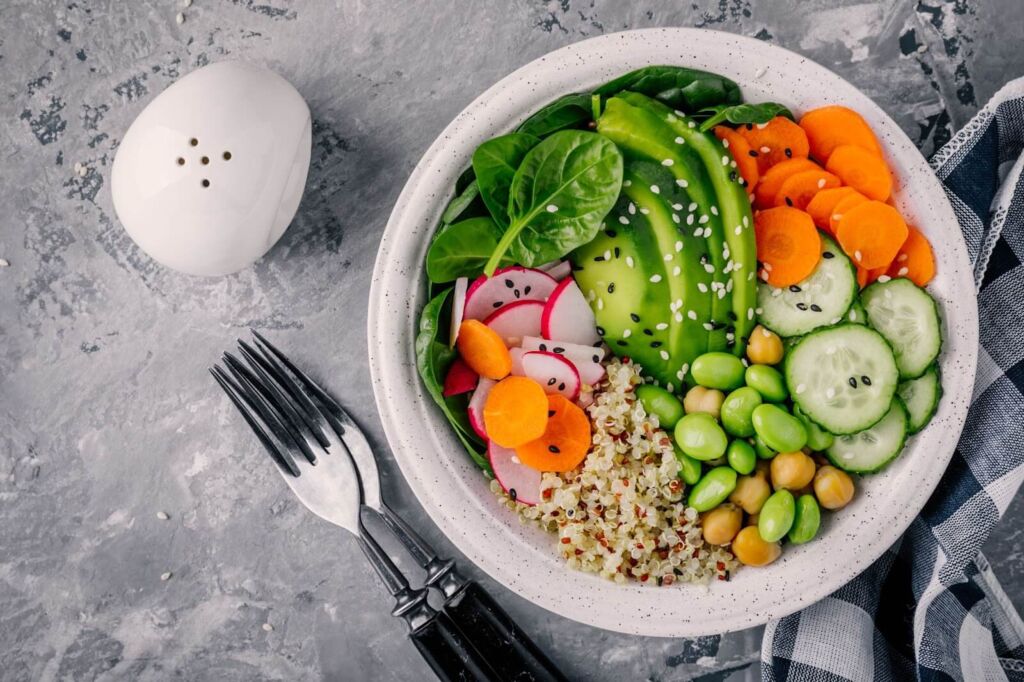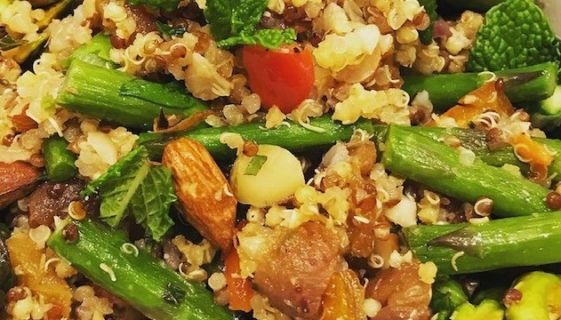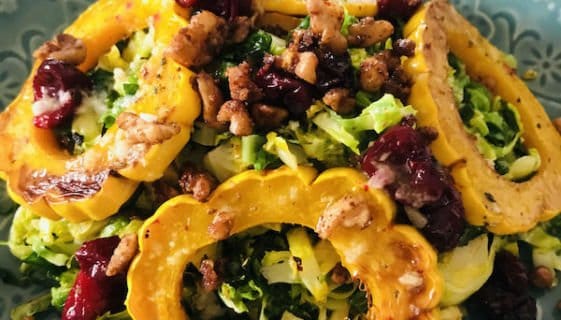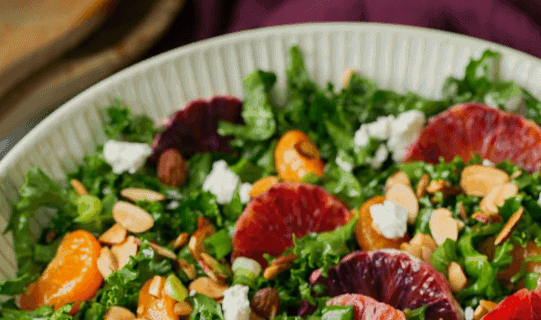A divinely simple salad packed full of plant-based protein, antioxidants, and fiber to keep you energized and satisfied all day. The bright and easy vinaigrette adds an extra burst of flavor, bringing all the ingredients together in a symphony of vibrant tastes and textures. This salad provides a tasty combination of crisp cucumbers and radishes, sweet carrots, earthy quinoa, fresh spinach, creamy avocado, and nutty edamame. This colorful dish is not only beautiful, nutritious, and delicious but also is a great option for early meal prepping as it will hold for 3-4 days in the refrigerator, marinating and enhancing the flavors each day.
Edamame Quinoa Salad
Serves 4
Ingredients
Dressing
- ¼ cup olive oil or sesame
- 2 limes, juiced and zested
- 1 tbsp soy sauce, tamari or aminos
- 1 tsp nut or seed butter
- ½ tsp salt
- Pinch of ground black pepper
- ½ tsp red pepper flakes (optional)
Quinoa
- 1 cup quinoa
- 2 cups water
- 1 tsp olive oil
- ½ tsp salt
- ½ tsp turmeric
- ¼ tsp black pepper
Salad
- 2 cups edamame, shelled fresh or frozen
- 1 cup radishes, sliced
- 2 medium carrots, sliced
- 4 cups baby spinach leaves
- 1 medium cucumber, sliced
- 1 avocado, sliced
Directions
- Place the quinoa in a bowl with 2 cups of warm water and a tsp of lemon juice or vinegar. Cover and soak overnight. After soaking, drain grains, discard the soaking water and rinse the grains with fresh water (if you do not have time to soak your quinoa overnight, skip to step 2). The soaking process allows for easier digestion and cooking as well as increased absorption of nutrients.
- Heat a saucepan over medium heat with a small amount of olive or avocado oil. Add the quinoa, stirring frequently for 1-2 minutes until it becomes aromatic and the grains start to crackle.
- Add 2 cups of water and bring to a boil. Season with salt, turmeric, and pepper, reduce to a low simmer, cover, and cook grains for about 25 minutes until the liquid has been fully absorbed.
- Turn off the heat and keep the lid on for 5 minutes. After 5 minutes, fluff grains with a fork. If you prefer a warm salad, keep the grains covered to hold in the warmth. If you prefer to serve the dish at room temperature, uncover the grains and transfer them to a bowl at this point to cool.
- While the quinoa is cooking, whisk or blend in a blender all the dressing ingredients and set aside.
- Also, prepare the vegetables while the quinoa is cooking.
- Once the quinoa is finished, divide all ingredients between 4 bowls and top with dressing or dress salad in one large bowl for meal prepping.
Nutrition
Edamame: Also known as soybeans, which is one of the few plant-based protein options that is considered a complete protein (contains sufficient amounts of all essential amino acids). Soybeans have anti-inflammatory compounds and beneficial isoflavones that can protect the heart, improve insulin sensitivity, and reduce the risk of breast, digestive system, and prostate cancers.
Quinoa: Provide high amounts of protein for a grain. Packed full of fiber to help promote healthy gut microbes to support a strong immune system and reduce inflammation. They promote satiety and have been linked to increased longevity. The polyphenols in both grains demonstrate high antioxidant activity by employing a chemo-preventive and anti-carcinogenic effect on oxidative stress and free radicals to protect our DNA.
Radish: Cruciferous vegetable that has anticancer properties. Radishes are also great sources of fiber to help with balancing blood sugar and supporting gut health.
Carrots: Packed full of Beta-carotene (precursor to vitamin A). Vitamin A is integral for vision and immune function, as well as skin and bone health. Beta-carotene is a powerful antioxidant that can reduce inflammation and boost immune function by increasing disease-fighting cells in the body and assisting cells in protection against viruses.
Spinach: Greens such as kale, spinach, collards, mustard greens, arugula, and chard have been shown to protect bones from osteoporosis, reduce inflammation, support a healthy gut, strengthen the immune system, protect cognition and supply a high amount of antioxidants. They are considered to be among some of the best anticancer foods.
Cucumber: One of the most hydrating foods to help the body regulate temperature, physical performance, and metabolism. It can also help with balancing blood sugar levels.
Avocado: Avocados are actually a type of berry that provides an excellent source of fiber, potassium, B vitamins and healthy fats. They have been shown to support heart health, improve digestion and eye health, reduce inflammation, balance hormone levels, improve mood, balance blood pressure and improve nervous system function. They are also great gut-friendly food.
Turmeric & Black Pepper: Curcumin in turmeric is poorly absorbed in the bloodstream. Happily, when combined with black pepper (which contains piperine) and healthy fat, the absorption of curcumin is enhanced by 2,000%. Curcumin is a very powerful anti-inflammatory compound – it blocks the molecule NF-kB that turns on inflammatory genes in our cells. Curcumin can increase the antioxidant capacity of our bodies by neutralizing free radicals on its own and by stimulating the body’s own antioxidant enzymes. It has been shown to improve endothelial function.
Citrus juice: Packed full of a multitude of nutrients such as vitamin C, flavonoids, and fiber. These support vascular protection, reduced inflammation, improved gastrointestinal function, and health, and can play an important role in preventing diabetes, cancer, and neurological disease.



 Ananda Kaplan
Ananda Kaplan 

